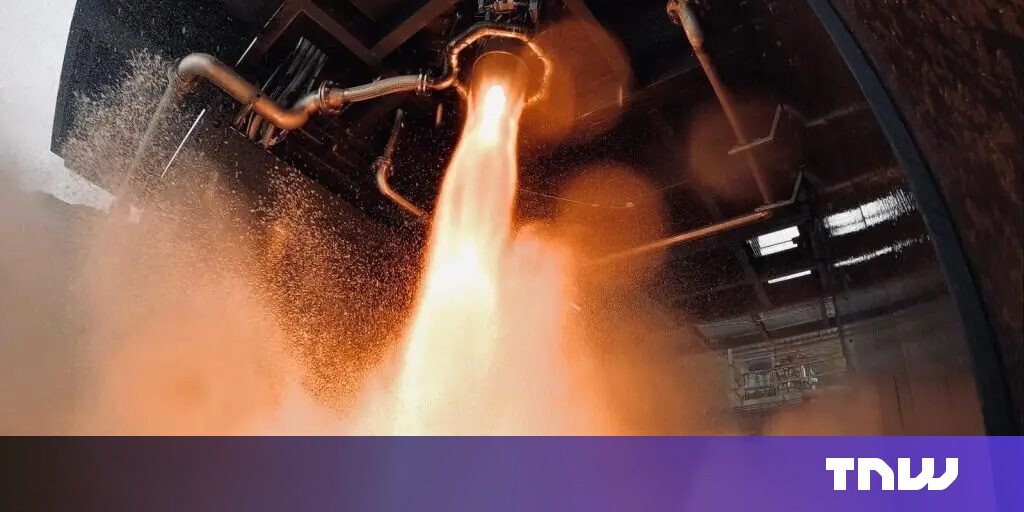3D-Printed Rocket Engine: Scotland on the Verge of Space Launch
Editor’s Note: A groundbreaking 3D-printed rocket engine is set for launch from Scotland, marking a significant leap in space technology.
Why This Matters
The upcoming launch of a rocket powered by a 3D-printed engine from Scotland signifies a pivotal moment for the burgeoning space industry. This development showcases the potential of additive manufacturing to revolutionize rocket propulsion, offering cost-effective, efficient, and highly customizable solutions. The success of this launch could pave the way for more frequent and affordable space access, impacting various sectors like satellite deployment, scientific research, and even space tourism. This article will explore the key aspects of this innovative technology and its implications for the future of space exploration. Keywords: 3D-printed rocket engine, Scotland space launch, additive manufacturing, space technology, rocket propulsion, space exploration, sustainable space industry.
Key Takeaways
| Feature | Description |
|---|---|
| Technology | 3D-printed rocket engine using advanced metal alloys. |
| Location | Scotland, UK. |
| Significance | Demonstrates feasibility of additive manufacturing for space propulsion. |
| Impact | Potential for reduced costs, increased efficiency, and customized designs. |
| Future | Opens doors for more frequent and accessible space launches. |
3D-Printed Rocket Engine: A Scottish Space Revolution
The upcoming launch from Scotland marks a significant milestone in the global space race. This isn't just another rocket launch; it's a testament to the power of 3D printing technology in reshaping the future of space exploration. The use of a 3D-printed engine drastically alters the traditional manufacturing paradigm, offering several key advantages.
Key Aspects of the 3D-Printed Engine
The engine's design incorporates advanced metal alloys, specifically chosen for their high strength-to-weight ratio and heat resistance, crucial for withstanding the intense pressures and temperatures of rocket combustion. The 3D-printing process allows for intricate designs that would be impossible to create using traditional methods, leading to improved efficiency and performance.
Detailed Analysis: Advantages of Additive Manufacturing
- Cost Reduction: 3D printing significantly reduces material waste and labor costs associated with traditional manufacturing techniques, making space travel more affordable.
- Increased Efficiency: The ability to create complex internal geometries leads to improved fuel combustion and higher thrust-to-weight ratios.
- Customization: 3D printing enables the creation of highly customized engines tailored to specific mission requirements, enhancing versatility and flexibility.
- Faster Development: The process streamlines the design-to-production cycle, accelerating the development and deployment of new rocket technologies.
The Launch Site and its Significance
(This section would detail the specific launch site in Scotland, the company behind the launch, and any unique aspects of the location that contribute to the story.)
People Also Ask (NLP-Friendly Answers)
Q1: What is a 3D-printed rocket engine?
A: A 3D-printed rocket engine is a propulsion system where the engine components are created using additive manufacturing (3D printing) techniques, rather than traditional casting or machining. This allows for complex designs and potentially lower production costs.
Q2: Why is this Scottish launch important?
A: This launch is significant because it demonstrates the viability of 3D-printed rocket engines for actual space missions. It showcases the potential for additive manufacturing to revolutionize the space industry by reducing costs and improving efficiency.
Q3: How can this benefit the space industry?
A: This technology can significantly reduce the cost of space launches, making space access more affordable and frequent. It also allows for more customized engine designs, improving performance and efficiency for various missions.
Q4: What are the main challenges with 3D-printed rocket engines?
A: Challenges include ensuring the long-term reliability and durability of 3D-printed components under extreme conditions, as well as scaling up production to meet the demands of larger-scale space programs.
Q5: How to get started in the 3D-printed rocketry field?
A: Start by researching additive manufacturing techniques and materials. Look into relevant engineering and aerospace programs. Networking with experts in the field is also crucial.
Practical Tips for Following the Launch
- Check the Launch Schedule: Monitor the official website for precise launch dates and times.
- Find Live Streaming Options: Many space agencies and news outlets stream launches live online.
- Learn about Rocket Propulsion: Educate yourself about the basics of rocket science to better appreciate the technological achievement.
- Follow Social Media Updates: Space agencies and companies often share updates on social media.
- Engage with the Space Community: Join online forums or communities dedicated to space exploration to discuss the event.
Summary
The impending launch of a rocket powered by a 3D-printed engine from Scotland represents a giant leap for the space industry. This innovative technology promises to revolutionize space travel, making it more affordable, efficient, and accessible. The success of this mission will undoubtedly inspire further advancements in additive manufacturing and accelerate the pace of space exploration.
Closing Message
This Scottish launch is more than just a technological feat; it's a symbol of innovation and a testament to human ingenuity. What new frontiers will 3D-printed rocket engines unlock next?
Call to Action
Stay informed about this exciting development by subscribing to our newsletter for updates on space technology and future launches. Share this article with your network to spread awareness about this groundbreaking achievement!

